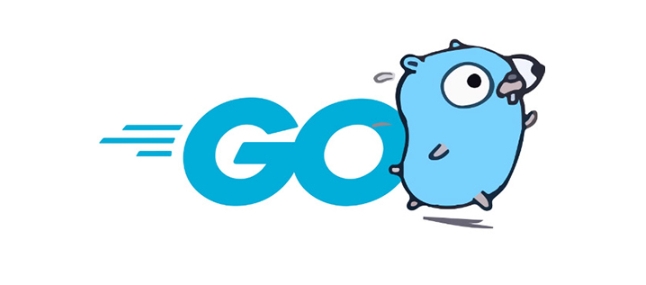It is not difficult to add TLS/SSL to the HTTP server, the key is to configure the certificate and start the service. 1. Obtain the certificate: You can apply for or use a self-signed certificate from a regular CA; 2. Prepare the certificate file: generally cert.pem and key.pem; 3. Enable HTTPS in Go: Call http.ListenAndServeTLS and pass in the certificate path; 4. Notes: Ensure the certificate path is correct, use https during access, and handle self-signed certificate warnings; 5. Frequently asked questions: insufficient port permissions, wrong certificate path, incorrect certificate format, and not configured HTTP to HTTPS redirection. Master these steps and key points to successfully complete HTTPS configuration.

It is actually not that difficult to add TLS/SSL to an HTTP server. The key is to figure out how to configure the certificate and how to enable the service. net/http package that comes with Go already supports HTTPS. As long as the certificate file is prepared and ListenAndServeTLS can be done.

The following links are most likely to get stuck: how to obtain certificates, how to write codes, and what may happen in the middle. Let's come one by one.
Prepare TLS certificate and private key
The core of HTTPS is the certificate private key. You have two common options:

- Apply from a regular CA (such as Let's Encrypt): Suitable for online services, the browser will not report red
- Self-signed certificate : Developing and testing is suitable, but the browser will prompt "insecurity"
There are usually two files for a certificate:
- Public key certificate in
.crtor.pemformat - Private key file in
.keyformat
If you generate it yourself, you can use the openssl command:

openssl req -x509 -newkey rsa:4096 -keyout key.pem -out cert.pem -days 365 -nodes
After running, you will get cert.pem and key.pem , which you need to use later.
Enable HTTPS service in Go
Go launches HTTPS is very simple, and the standard library http supports out of the box. The basic structure is as follows:
package main
import (
"fmt"
"net/http"
)
func main() {
http.HandleFunc("/", func(w http.ResponseWriter, r *http.Request) {
fmt.Fprintf(w, "Hello over HTTPS!")
})
// Note that the order is certFile in front and keyFile in back err := http.ListenAndServeTLS(":443", "cert.pem", "key.pem", nil)
if err != nil {
panic(err)
}
}A few points to note:
- Make sure the certificate path is correct, especially after deployment to the server
- If you are testing locally, remember to access it with
https://localhost, nothttp - If you are using a self-signed certificate, Chrome will stop you, click "Advanced" and then continue
A pitfall that is easy to step on when configuring HTTPS
Port permission issues
- Want to listen to port 443? Ordinary users do not have permissions, either use root or iptables for forwarding
Certificate path error
- Check if your PEM file has a misspelled name or the directory is incorrect
- You can add a log to print the current working directory to see if the path is correct
The certificate format is wrong
- Make sure your private key is not protected by password, otherwise Go cannot load
- Some certificate chains require the merge of intermediate certificates, otherwise the browser will still alert
HTTP to HTTPS redirection
It is usually recommended to listen to port 80 at the same time and redirect all requests to HTTPS
Sample code:
go http.ListenAndServe(":80", http.HandlerFunc(func(w http.ResponseWriter, r *http.Request) { http.Redirect(w, r, "https://yourdomain.com" r.RequestURI, http.StatusMovedPermanently) }))
Basically that's it. The TLS setting itself is not complicated, but it is easy to get stuck in the details of certificate format, path, and permissions. Once running, HTTPS is stable.
The above is the detailed content of How to secure an HTTP server with TLS/SSL in Go. For more information, please follow other related articles on the PHP Chinese website!

Hot AI Tools

Undress AI Tool
Undress images for free

Undresser.AI Undress
AI-powered app for creating realistic nude photos

AI Clothes Remover
Online AI tool for removing clothes from photos.

Clothoff.io
AI clothes remover

Video Face Swap
Swap faces in any video effortlessly with our completely free AI face swap tool!

Hot Article

Hot Tools

Notepad++7.3.1
Easy-to-use and free code editor

SublimeText3 Chinese version
Chinese version, very easy to use

Zend Studio 13.0.1
Powerful PHP integrated development environment

Dreamweaver CS6
Visual web development tools

SublimeText3 Mac version
God-level code editing software (SublimeText3)

Hot Topics
 What are the implications of Go's static linking by default?
Jun 19, 2025 am 01:08 AM
What are the implications of Go's static linking by default?
Jun 19, 2025 am 01:08 AM
Go compiles the program into a standalone binary by default, the main reason is static linking. 1. Simpler deployment: no additional installation of dependency libraries, can be run directly across Linux distributions; 2. Larger binary size: Including all dependencies causes file size to increase, but can be optimized through building flags or compression tools; 3. Higher predictability and security: avoid risks brought about by changes in external library versions and enhance stability; 4. Limited operation flexibility: cannot hot update of shared libraries, and recompile and deployment are required to fix dependency vulnerabilities. These features make Go suitable for CLI tools, microservices and other scenarios, but trade-offs are needed in environments where storage is restricted or relies on centralized management.
 How do I create a buffered channel in Go? (e.g., make(chan int, 10))
Jun 20, 2025 am 01:07 AM
How do I create a buffered channel in Go? (e.g., make(chan int, 10))
Jun 20, 2025 am 01:07 AM
To create a buffer channel in Go, just specify the capacity parameters in the make function. The buffer channel allows the sending operation to temporarily store data when there is no receiver, as long as the specified capacity is not exceeded. For example, ch:=make(chanint,10) creates a buffer channel that can store up to 10 integer values; unlike unbuffered channels, data will not be blocked immediately when sending, but the data will be temporarily stored in the buffer until it is taken away by the receiver; when using it, please note: 1. The capacity setting should be reasonable to avoid memory waste or frequent blocking; 2. The buffer needs to prevent memory problems from being accumulated indefinitely in the buffer; 3. The signal can be passed by the chanstruct{} type to save resources; common scenarios include controlling the number of concurrency, producer-consumer models and differentiation
 How can you use Go for system programming tasks?
Jun 19, 2025 am 01:10 AM
How can you use Go for system programming tasks?
Jun 19, 2025 am 01:10 AM
Go is ideal for system programming because it combines the performance of compiled languages ??such as C with the ease of use and security of modern languages. 1. In terms of file and directory operations, Go's os package supports creation, deletion, renaming and checking whether files and directories exist. Use os.ReadFile to read the entire file in one line of code, which is suitable for writing backup scripts or log processing tools; 2. In terms of process management, the exec.Command function of the os/exec package can execute external commands, capture output, set environment variables, redirect input and output flows, and control process life cycles, which are suitable for automation tools and deployment scripts; 3. In terms of network and concurrency, the net package supports TCP/UDP programming, DNS query and original sets.
 How does Go ensure memory safety without manual memory management like in C?
Jun 19, 2025 am 01:11 AM
How does Go ensure memory safety without manual memory management like in C?
Jun 19, 2025 am 01:11 AM
Goensuresmemorysafetywithoutmanualmanagementthroughautomaticgarbagecollection,nopointerarithmetic,safeconcurrency,andruntimechecks.First,Go’sgarbagecollectorautomaticallyreclaimsunusedmemory,preventingleaksanddanglingpointers.Second,itdisallowspointe
 How do I call a method on a struct instance in Go?
Jun 24, 2025 pm 03:17 PM
How do I call a method on a struct instance in Go?
Jun 24, 2025 pm 03:17 PM
In Go language, calling a structure method requires first defining the structure and the method that binds the receiver, and accessing it using a point number. After defining the structure Rectangle, the method can be declared through the value receiver or the pointer receiver; 1. Use the value receiver such as func(rRectangle)Area()int and directly call it through rect.Area(); 2. If you need to modify the structure, use the pointer receiver such as func(r*Rectangle)SetWidth(...), and Go will automatically handle the conversion of pointers and values; 3. When embedding the structure, the method of embedded structure will be improved, and it can be called directly through the outer structure; 4. Go does not need to force use getter/setter,
 What are interfaces in Go, and how do I define them?
Jun 22, 2025 pm 03:41 PM
What are interfaces in Go, and how do I define them?
Jun 22, 2025 pm 03:41 PM
In Go, an interface is a type that defines behavior without specifying implementation. An interface consists of method signatures, and any type that implements these methods automatically satisfy the interface. For example, if you define a Speaker interface that contains the Speak() method, all types that implement the method can be considered Speaker. Interfaces are suitable for writing common functions, abstract implementation details, and using mock objects in testing. Defining an interface uses the interface keyword and lists method signatures, without explicitly declaring the type to implement the interface. Common use cases include logs, formatting, abstractions of different databases or services, and notification systems. For example, both Dog and Robot types can implement Speak methods and pass them to the same Anno
 How do I use the io package to work with input and output streams in Go?
Jun 20, 2025 am 11:25 AM
How do I use the io package to work with input and output streams in Go?
Jun 20, 2025 am 11:25 AM
TheGoiopackageprovidesinterfaceslikeReaderandWritertohandleI/Ooperationsuniformlyacrosssources.1.io.Reader'sReadmethodenablesreadingfromvarioussourcessuchasfilesorHTTPresponses.2.io.Writer'sWritemethodfacilitateswritingtodestinationslikestandardoutpu
 How do I use string functions from the strings package in Go? (e.g., len(), strings.Contains(), strings.Index(), strings.ReplaceAll())
Jun 20, 2025 am 01:06 AM
How do I use string functions from the strings package in Go? (e.g., len(), strings.Contains(), strings.Index(), strings.ReplaceAll())
Jun 20, 2025 am 01:06 AM
In Go language, string operations are mainly implemented through strings package and built-in functions. 1.strings.Contains() is used to determine whether a string contains a substring and returns a Boolean value; 2.strings.Index() can find the location where the substring appears for the first time, and if it does not exist, it returns -1; 3.strings.ReplaceAll() can replace all matching substrings, and can also control the number of replacements through strings.Replace(); 4.len() function is used to obtain the length of the bytes of the string, but when processing Unicode, you need to pay attention to the difference between characters and bytes. These functions are often used in scenarios such as data filtering, text parsing, and string processing.






